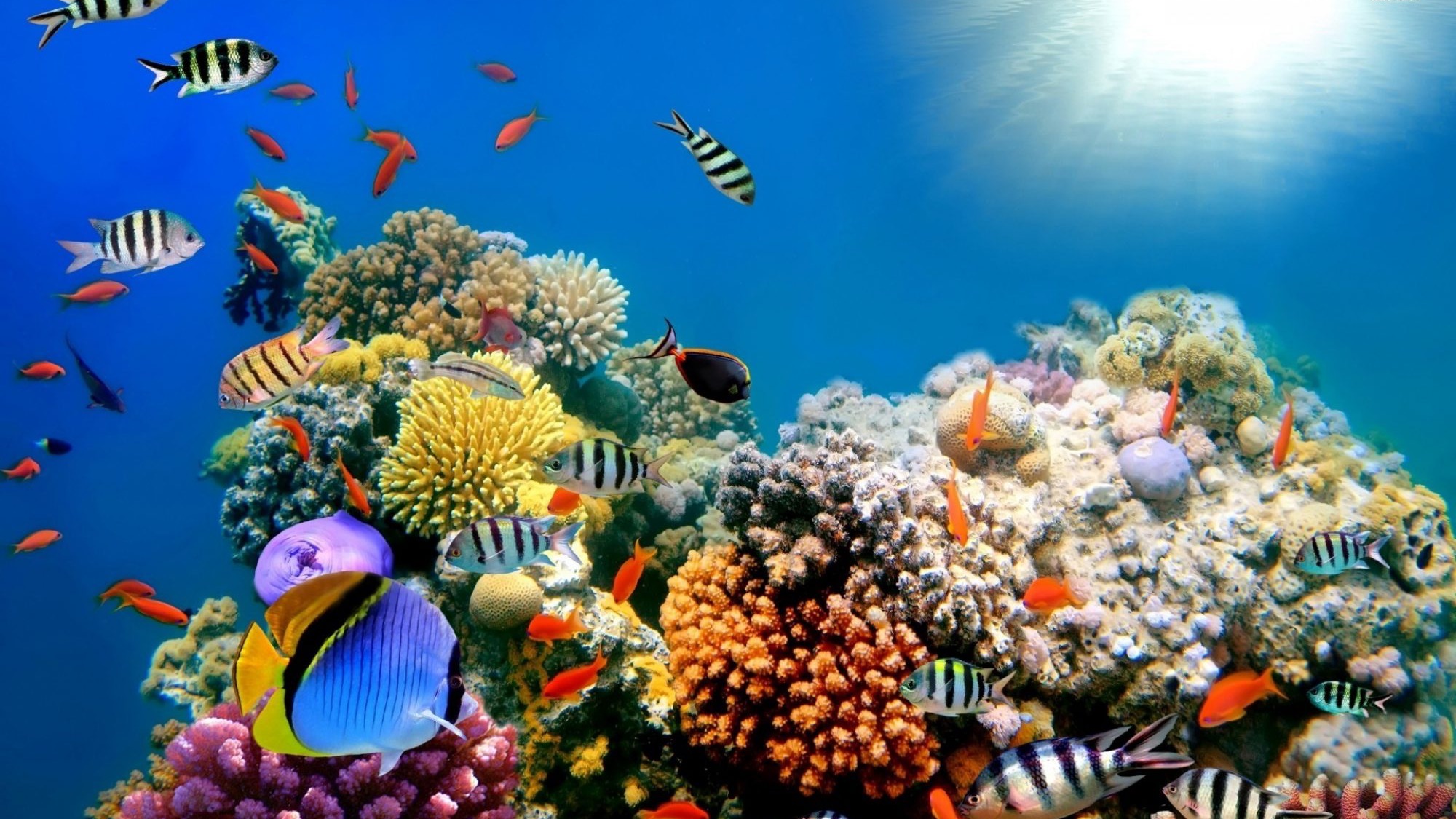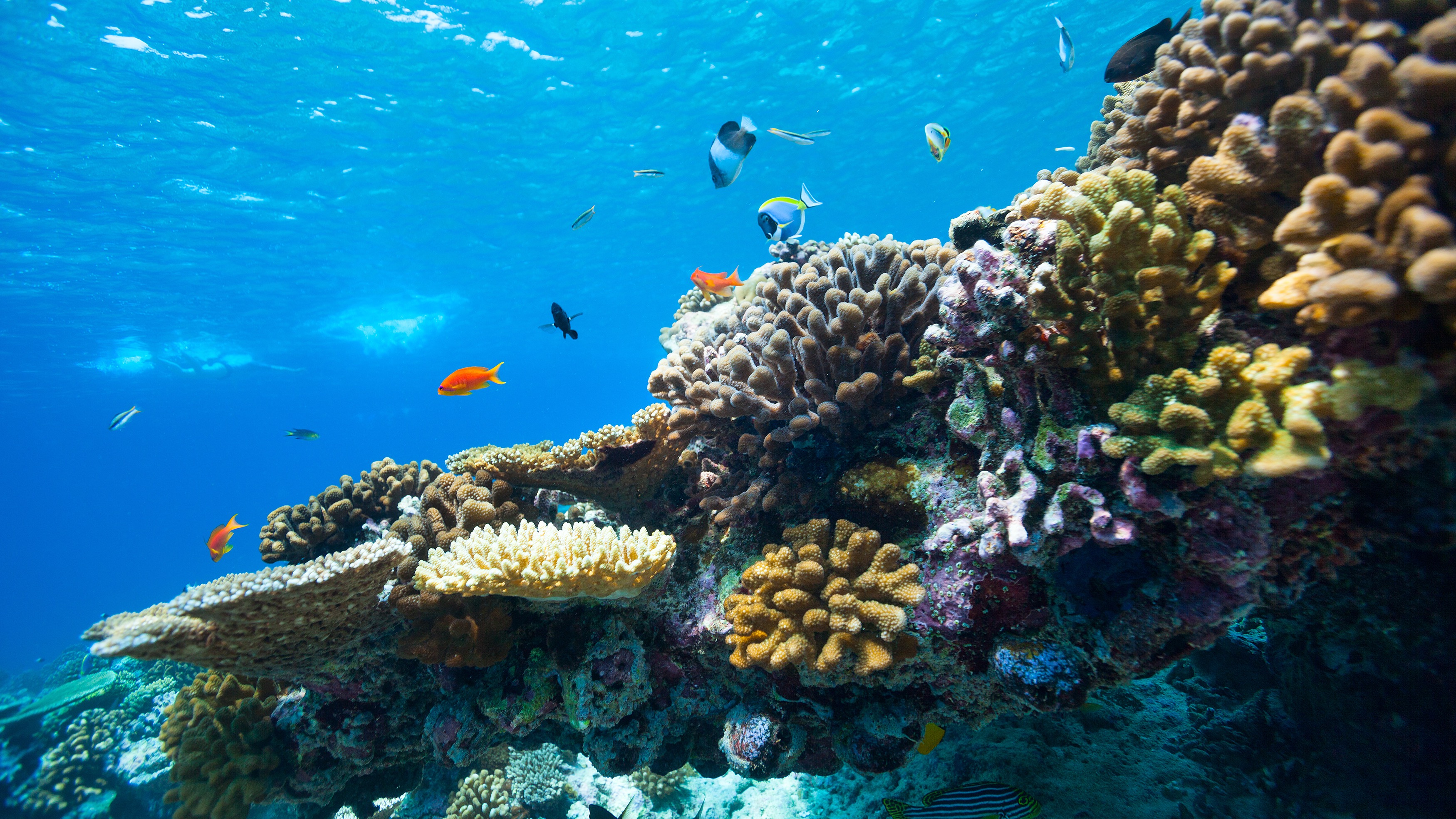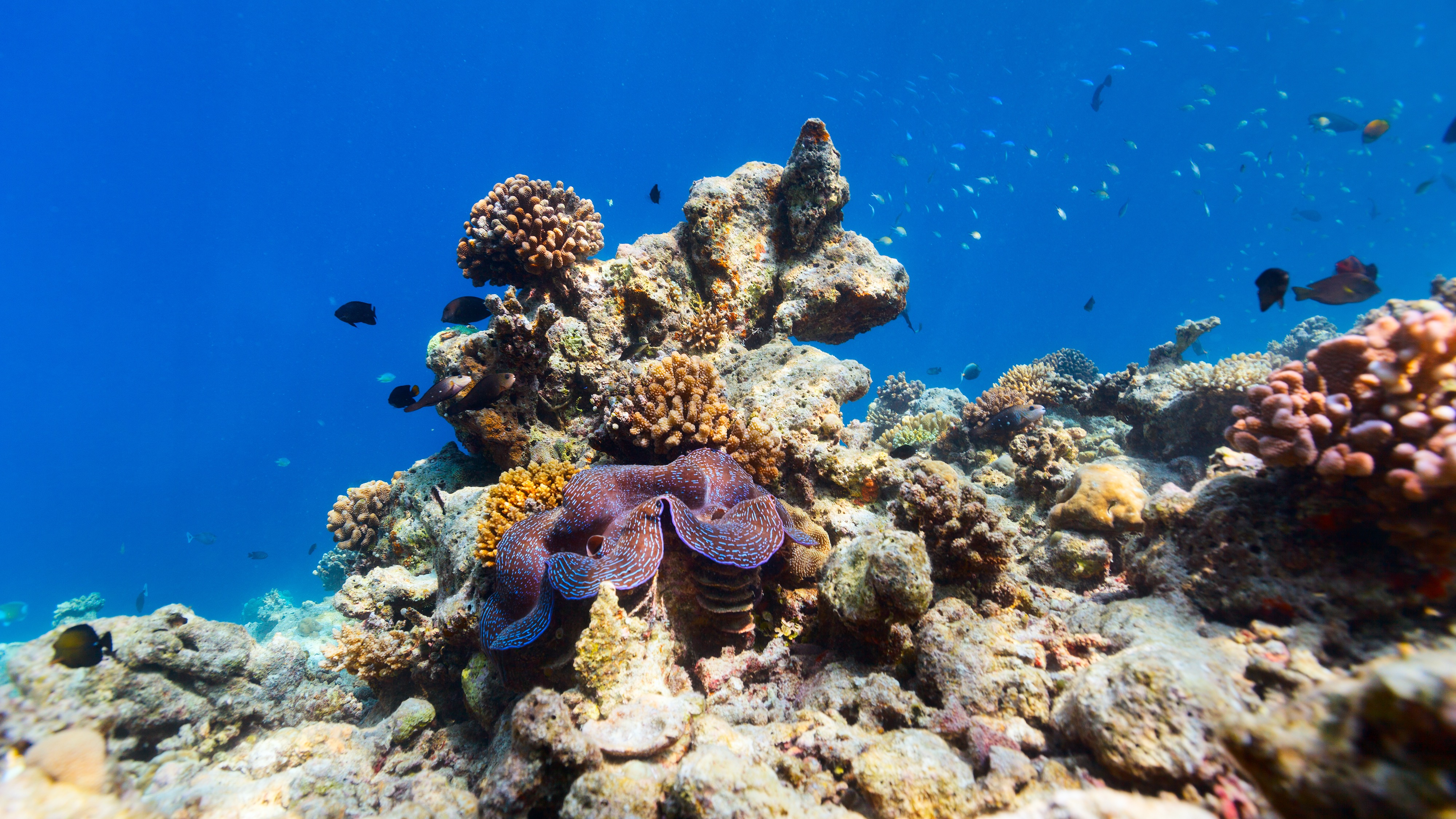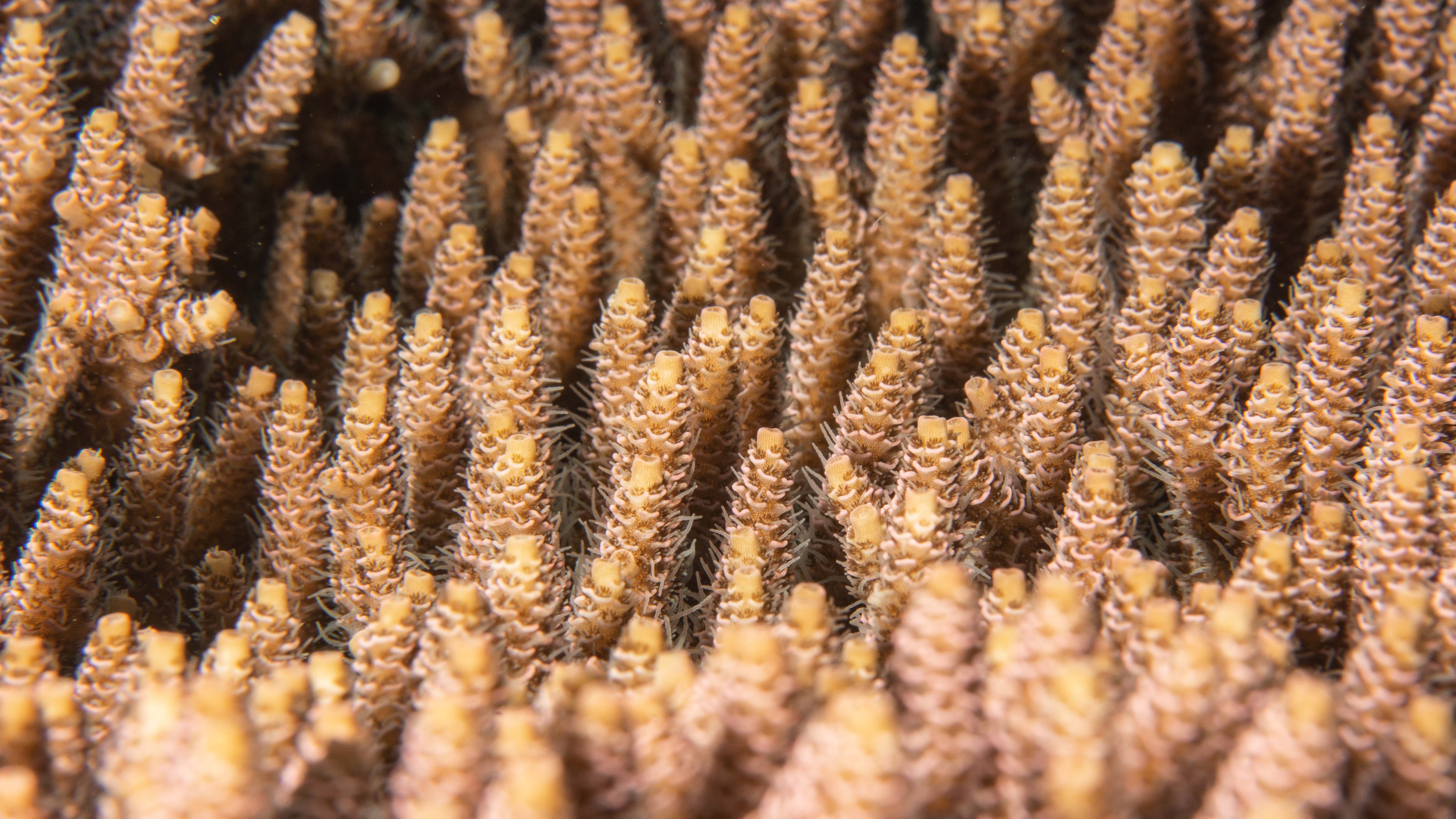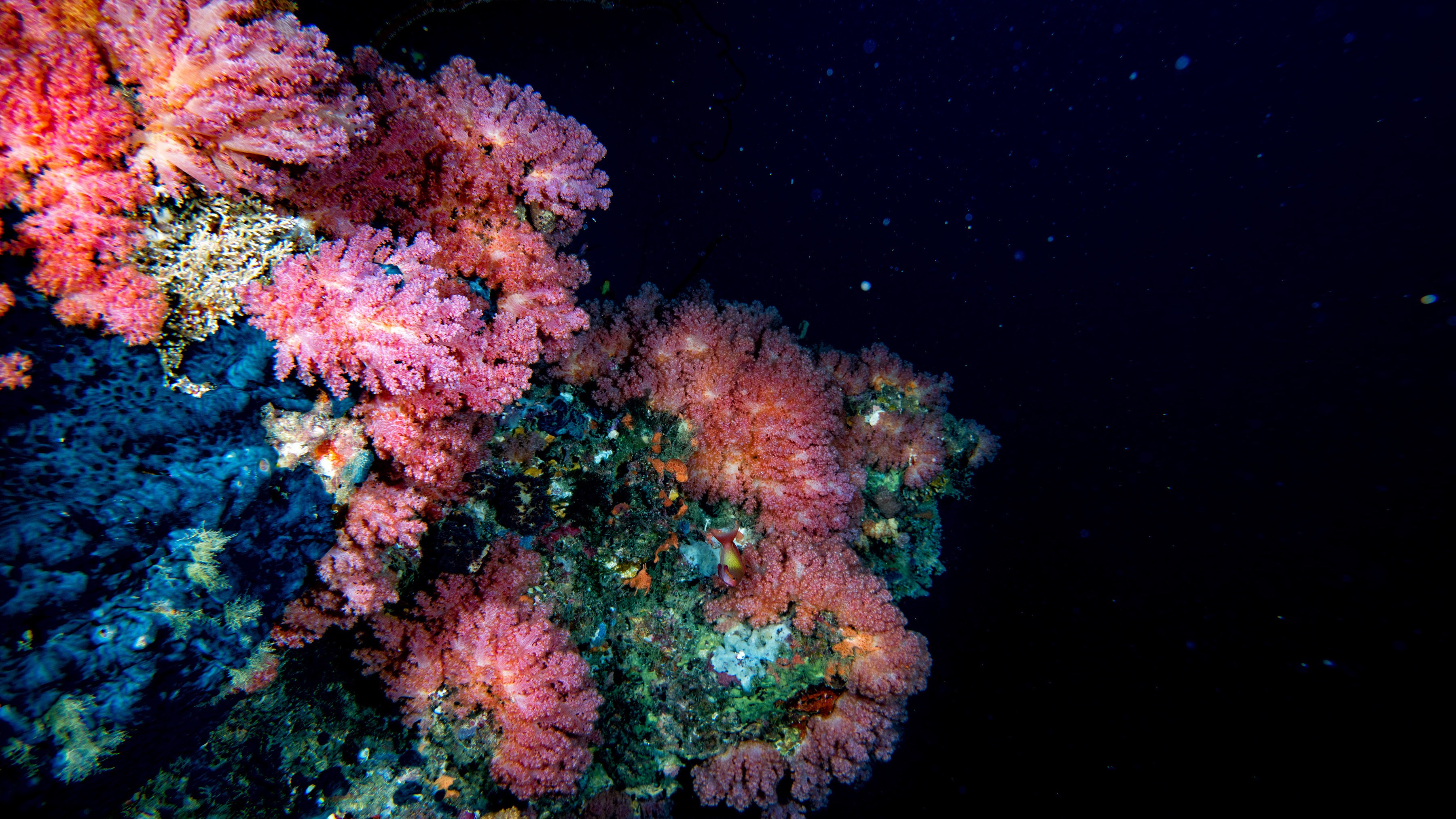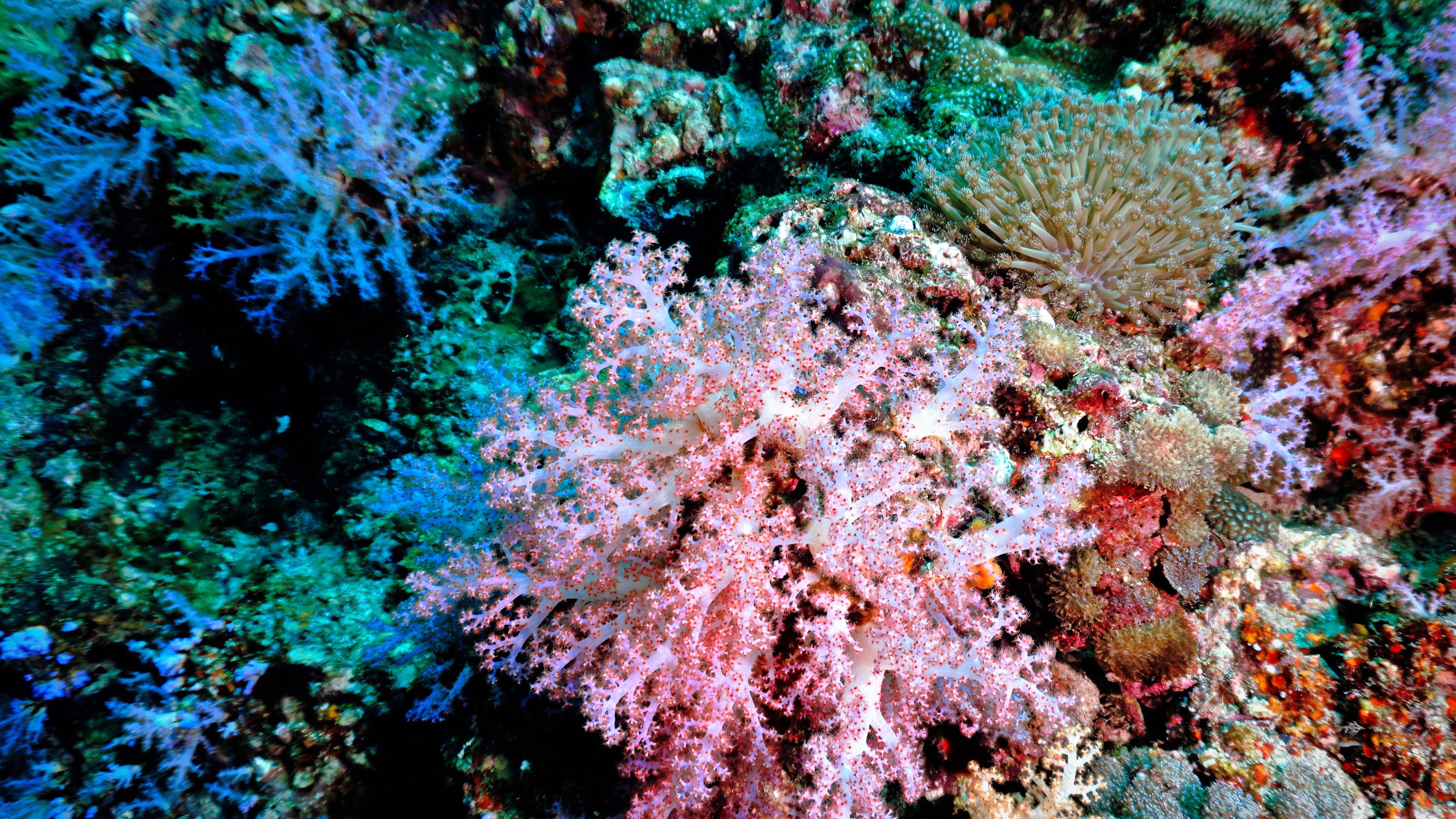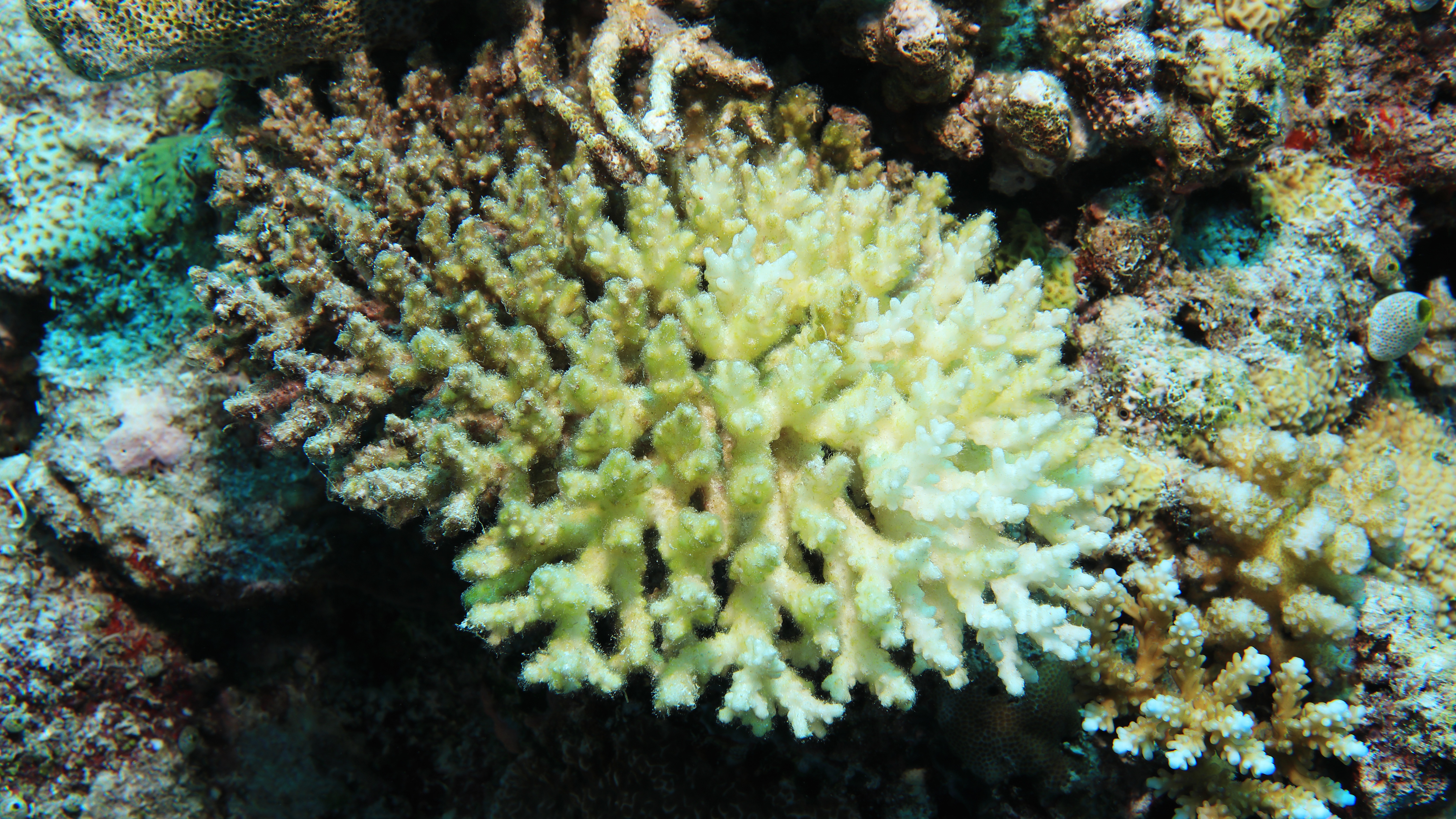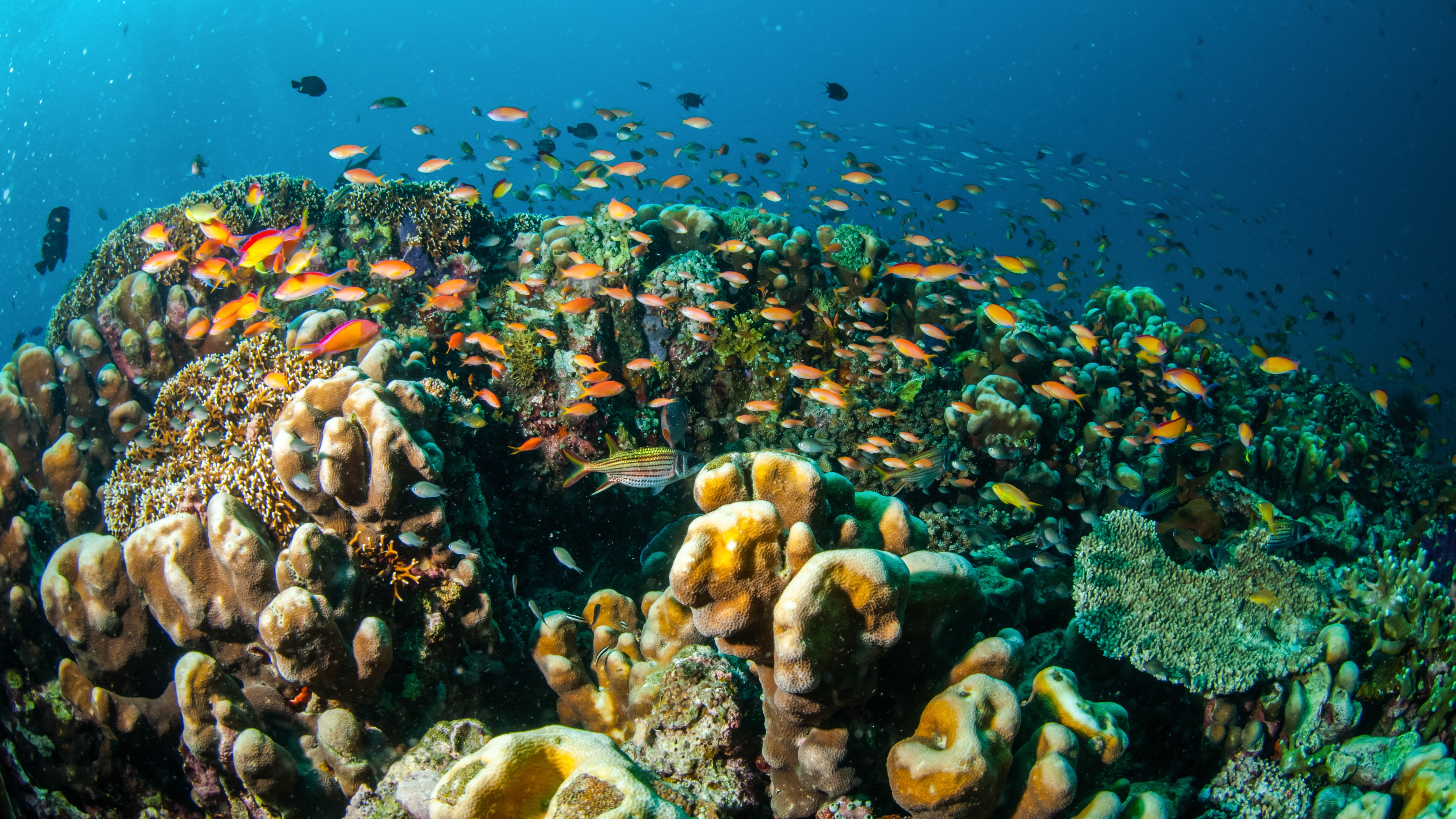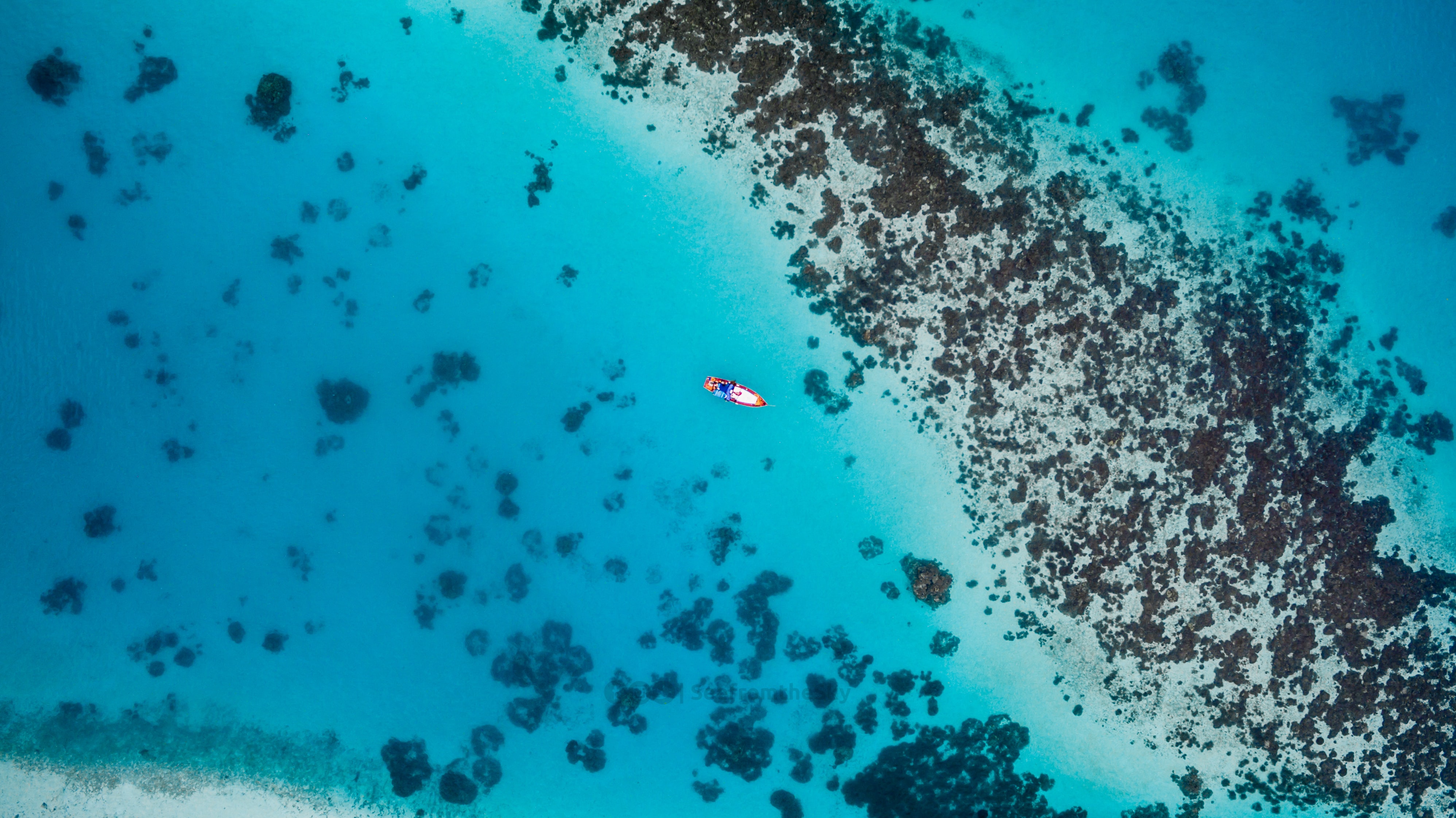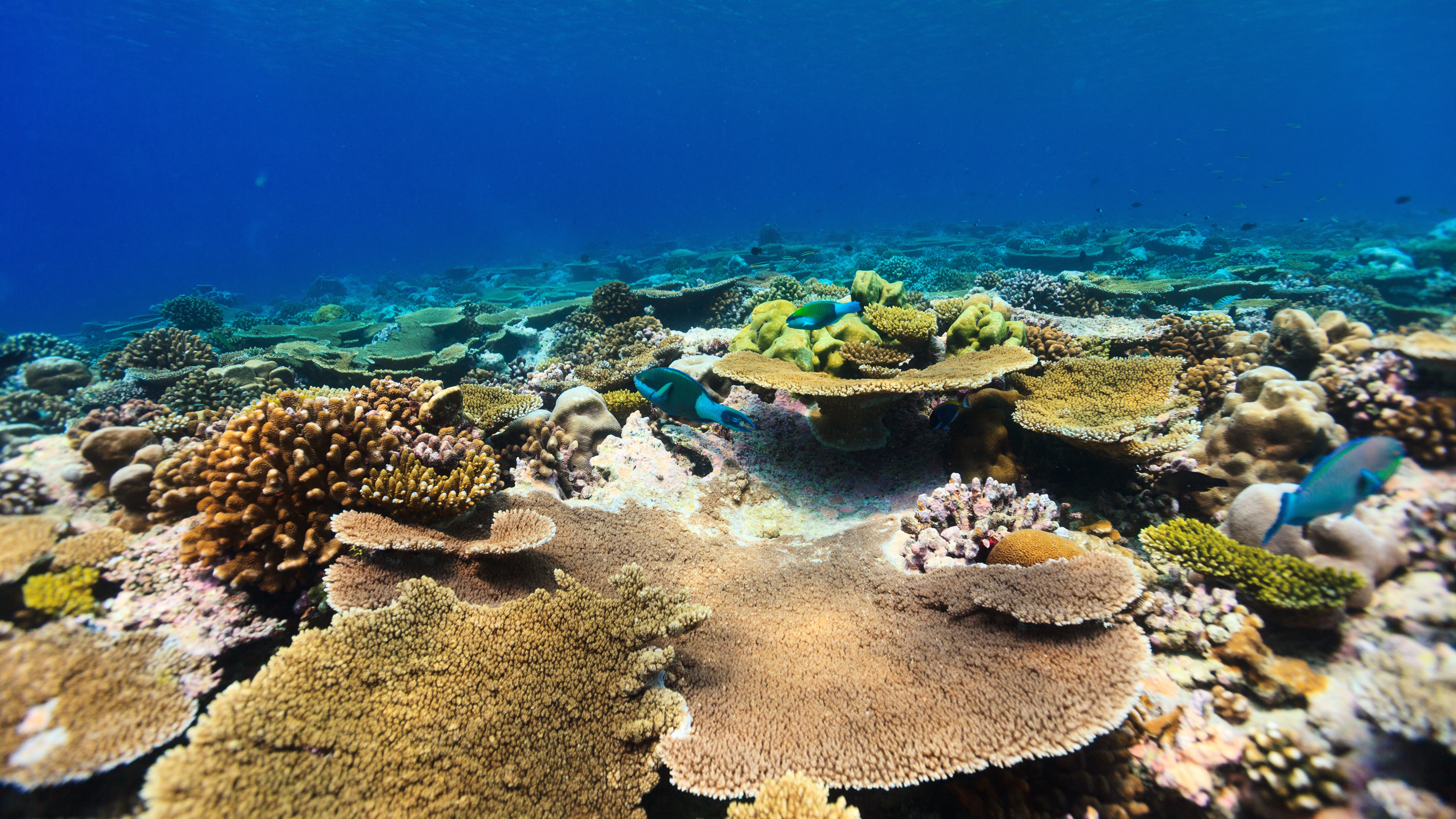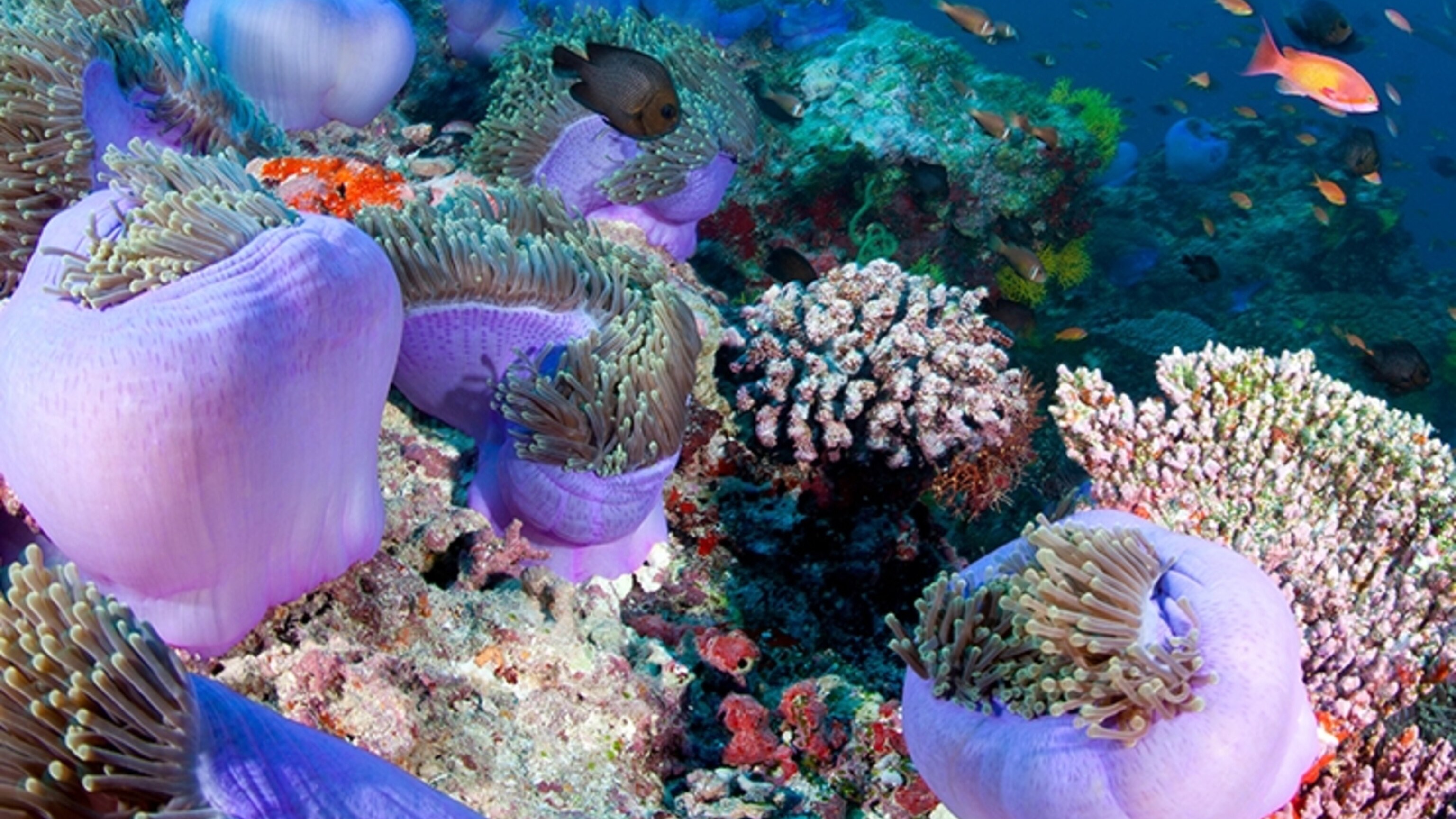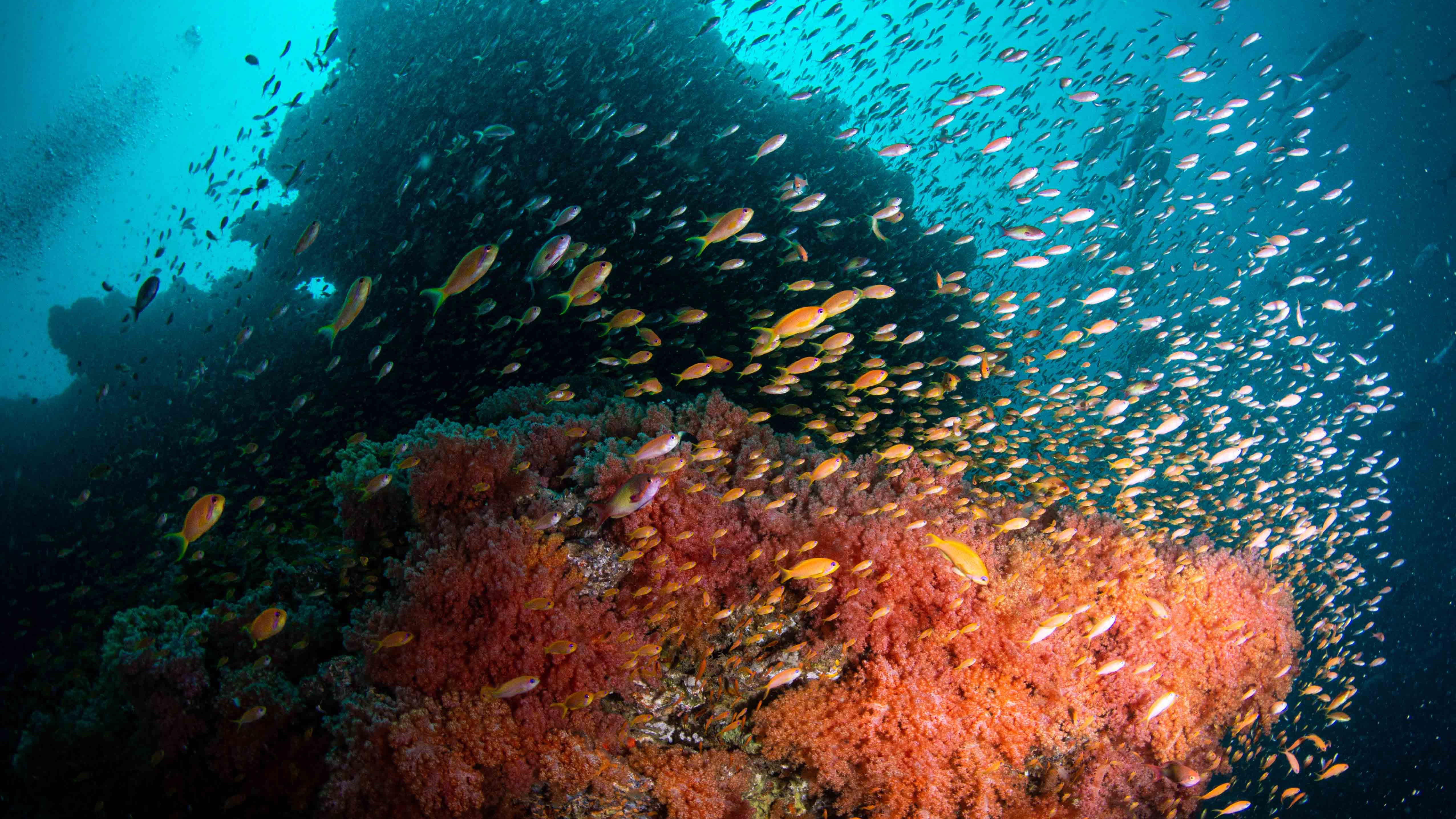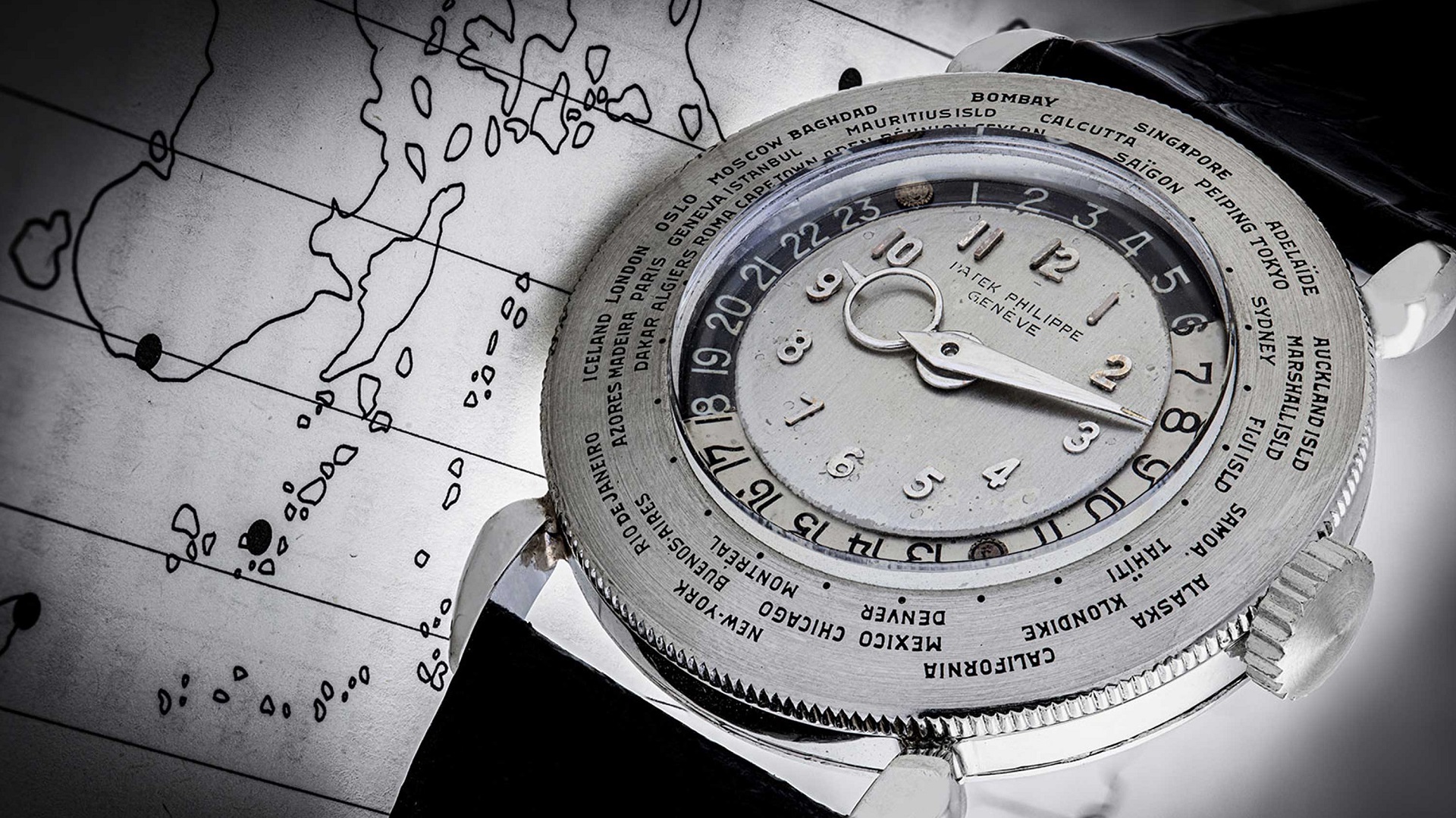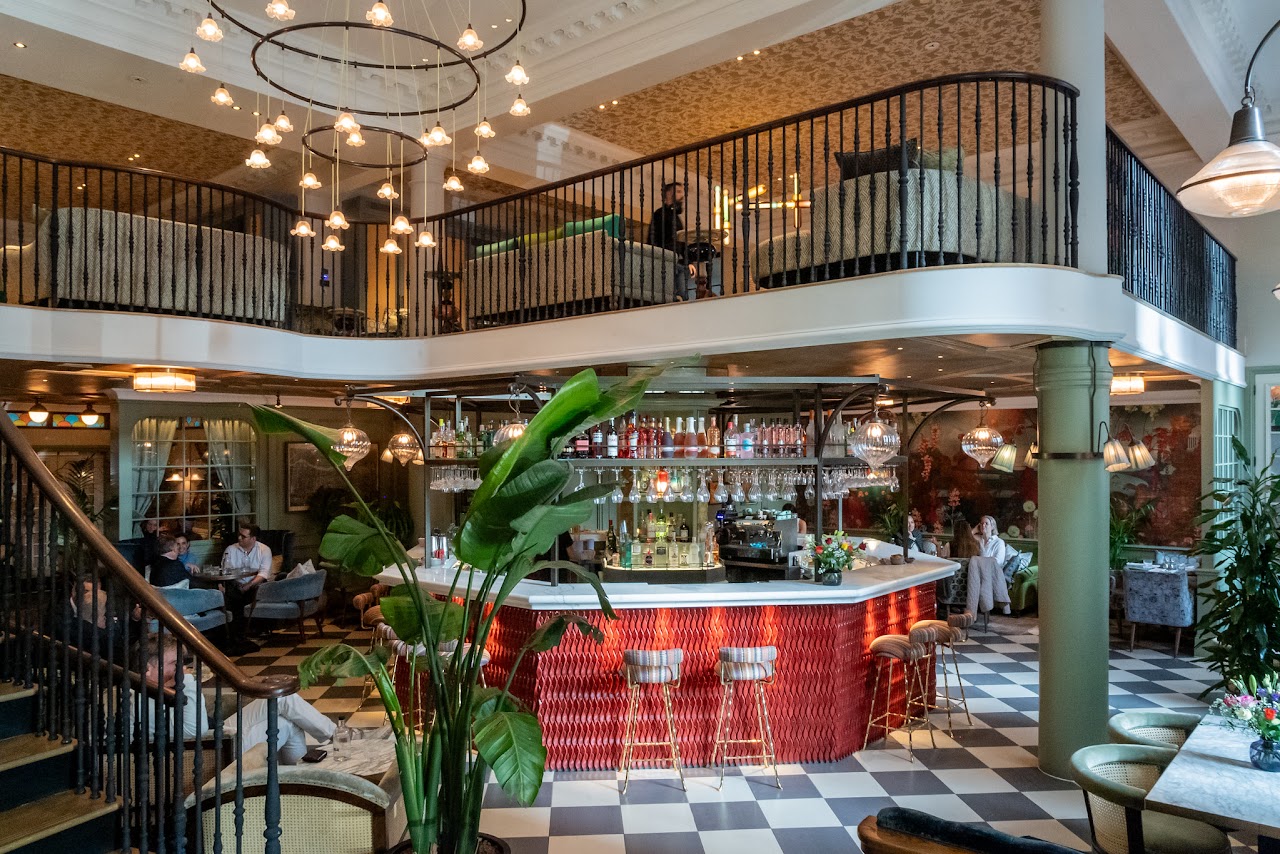When you think of a coral, what comes to mind? Is coral flora or fauna?
If you think animal, you are right!
It would be easy to think corals are plants or flower-like organism but, actually, they are a colony of marine invertebrates. Each one of these marine invertebrates is called a polyp and a coral reef can be formed by hundreds, or even hundreds of thousands, of them. In a coral, polyps are attached to each other with calcium carbonate which allows them to form a colony. Coral reefs are then formed by many of these colonies living together.
Coral belongs to the family Cnidaria and their close cousins are jellyfish and anemones. The characteristics of Cnidaria organisms is that they possess tentacles, one mouth and one stomach. Corals preferred food is zooplankton which they catch by using their tentacles and, once the polyps catch it, they proceed to introduce this nutritious meal inside their stomach. In addition, most corals live in a symbiotic relationship with Zooxanthellae algae which helps them obtain additional energy by the use of photosynthesis.
Tropical coral colonies can be classified in two different types: hard corals and soft corals.
Hard corals are fundamental as they are the building blocks of coral reefs. Their stony skeletons made of calcium carbonate gives them their strength and solid constitution. As thousands of years go by, colonies of hard corals grow on top of each other ultimately becoming a large extension of reef. Some species of hard corals are brain corals, stag horn corals, and branch corals.
In contrast, soft corals are flexible and plant-like looking. A major difference is that none of the soft corals produces calcium carbonate which means that, instead of stony skeletons, they have cores resemblingbranches which provides them with stability. Also, not all of soft corals cohabitate with zooxanthellae and, instead, feed on phytoplankton passing by. Examples of soft corals are sea fans, devil’s hand corals and colt corals.
If you have seen corals before I’m sure you have noticed how colourful they can be. The range of colours present in coral reefs range from goldish tones to more intense colours like blue, green, pink, orange and red; which makes them one of the most colourful natural wonders in the world. That being said, have you ever stopped to think how they get those dazzling colours?
Let's first explain a bit more of coral anatomy. The polyps have typically transparent bodies and the skeleton of the polyps is white coloured because of its calcium carbonate composition. The algae living in the polyps is actually what allows corals to have its vibrant colours.
Zooxanthellae algae has a pigment known as chlorophyll which gives corals its greenish or brownish tones. More brightly coloured corals produce protein pigments which gives them a different range of colours like red, violet, green and blue. In broad terms, the colour of a coral will be determined by the ocean depth they are located at and the spectrum of light.
These colours are coral’s sunscreen. If corals have more pigments, they will have more ultraviolet (UV) protection for their resident algae. Also, the colour of corals is one of the best ways to determine their overall health.
The warming of the ocean has had a negative effect in the coral reefs. Whenever there is a drastic temperature increase in the ocean the algae will abandon the polyps and, sadly, its natural pigment protection will not be enough to safeguard them.
Without the algae the coral loses its colour, it becomes white and it cannot longer feed itself. When the coral is already bleached, if the temperature goes back to normal levels within a few weeks, there is still a chance for the algae to return to the polyps preventing corals from starving to death. Unfortunately, once a coral reef dies it can take up to ten years for them to grow back again.
Although coral reefs make less than 1% of the Earth’s surface, they provide homes to 25% of the world’s marine life. That is over one million of marine life species.
Coral reefs are natural barriers against natural disasters, such as hurricanes and storms, for communities located next to the sea and, also, they effectively prevent erosion of the coastline.
Coral reefs provide food and a livelihood to more than five hundred million people in the world which rely on them for their own nourishment and for tourism.
There are some simple actions we can take to help coral reefs.
First is to change to reef safe products, specially sunscreen, whenever we are going into the sea.
If you visit a coral reef follow good practices to not collide with or touch it as this could cause the coral to break into pieces.
Use organic fertilisers and avoid pesticides and chemicals as they are most likely to get washed up into the sea and will pollute the water where corals live.
Support organisations that have the mission of protecting coral reefs and volunteer with them.
Most importantly, spread the word about the importance of coral reefs and what others can do to help. If we can get enough people to care about this cause we have more chances of making a difference!
Maldives has twenty-six atolls and more than one thousand and ninety islands. A special characteristic about Maldives is that its extension is 99% sea and all of its islands are resting on top of coral reefs. On top of that, there are also countless of submerged reefs in between the islands which basically makes Maldives a country made out of coral!
Best coral reefs in Maldives:
There are so many beautiful reefs in Maldives that it is difficult to choose which are the best ones. Taking vibrant coral life as main criteria, below you can find a selection of the top coral dive sites in the Maldives.
Maalhos Thila, North Ari Atoll
This is one of the famous coral dive sites in the Maldives. The signature of this place is its beautiful coral life made out of blue and purple soft corals. In this site there are also colourful sea fans and, on top of the reef, there are breath-taking Umbrella hard corals. Divers are wowed by this place more astounded at the end when they witness an explosion of hard corals on top of the reef. Its top is located at 12 meters and it slopes down to overhangs ranging in depth from 15 to 30 meters. For people that want big marine life in their dives this also a place where grey reef and white tip sharks are commonly spotted. Also, it has a wide array of fish such as soldier fish and blue-stripped snappers. This is a suitable dive site for both Open Water and Advanced Open Water divers. The difficulty level varies from easy to medium depending on the intensity of the current.
Labyrinth, Raa Atoll
Raa Atoll is still not as popular as other Atolls in the Maldives but it is, without a doubt, a place with abundant corals and marine life. There are many beautiful reefs in this Atoll but the one that definitely wins the crown is Labyrinth. The name comes from being an actual labyrinth of soft and hard corals! This site has tunnels and canyons covered with blue, pink and yellow soft corals as well as strong hard coral growth. The depth ranges from 12 metes to 35 metres with low to strong currents, making it suitable for Advanced Open Water Divers. In this amazing dive spot you can also find glass fish, napoleons, white tip sharks, sting rays, eagle rays, napoleons and big schools of batfish.
HP Reef, North Male Atoll
The HP Reef is located in the same atoll where Male and its International Airport are based. The main attraction of this reef is its amazing blue and pink-coloured soft coral life. The top of the reef is between 12 to 15 meters and it slopes down to about 35 meters with beautiful canyons and overhangs. Not only the overhangs are covered with soft corals but also the floor and the outside part of its topography. Inside the overhangs, it is a favourite place for nurse sharks to rest and, also, there is a school of eagle rays living in the area. Scorpion fish play hide and seek by camouflaging with the soft corals and, schools of yellow snappers and fusilier fish are also present in this site. This place has a low to strong range of current and it is mostly suitable for Advanced divers. In no current days, Open Water divers with good buoyancy skills can also visit this site with the proper guidance.
Kandooma Thila, South Male Atoll
This is one of the most famous dive sites in the Maldives. In days with the right current it is possible to see big schools of green reef sharks which is actually what makes this place so popular. Divers head to Kandooma Thila because they want to see its sharks but the surprise is how beautiful the coral is. This dive site is a big tear shaped pinnacle that starts at around 15 meters and slopes down to 40 meters. Colourful hard corals can be seen throughout the pinnacle and soft corals are mostly located inside its overhangs. This is also a place where you can find turtles, eagle rays and big schools of a wide variety of fish! Suitable for Advanced Divers only due to its range of medium to strong currents.
7th Heaven, South Ari Atoll
In this dive site you can find endless soft corals in a variety of colours, no wonder why it’s called “7th Heaven”! Divers are amazed by its very strong coral growth. You need a good hour dive here and even then, there is still such a big extension to be explored all covered with colourful corals. The top of this reef is around 15 meters and it slops down with overhangs to a depth from 20 to 30 meters. The overhangs are filled with pink, blue, yellow, and orange soft corals; and, also, lots of gorgonian can be found. Marine life is no less impressive as fish life is quite abundant. Napoleons, eagle rays, groupers, tunas and big schools of snappers and fusiliers live here. If you are lucky, you could even see a blue spotted stingray. This is a place for advanced divers and its difficulty level ranges from easy to medium depending on the current.
Gabriela Farias Gonzalez is the resident Divemaster on JOALI Being.
Read the BusinessClass.com review and find the best rates for JOALI Maldives
Read the BusinessClass.com review and find the best rates for JOALI Being
BusinessClass.com searches hundreds of travel sites at once to help you find the best premium travel offers for both flights and accommodation in Maldives.
